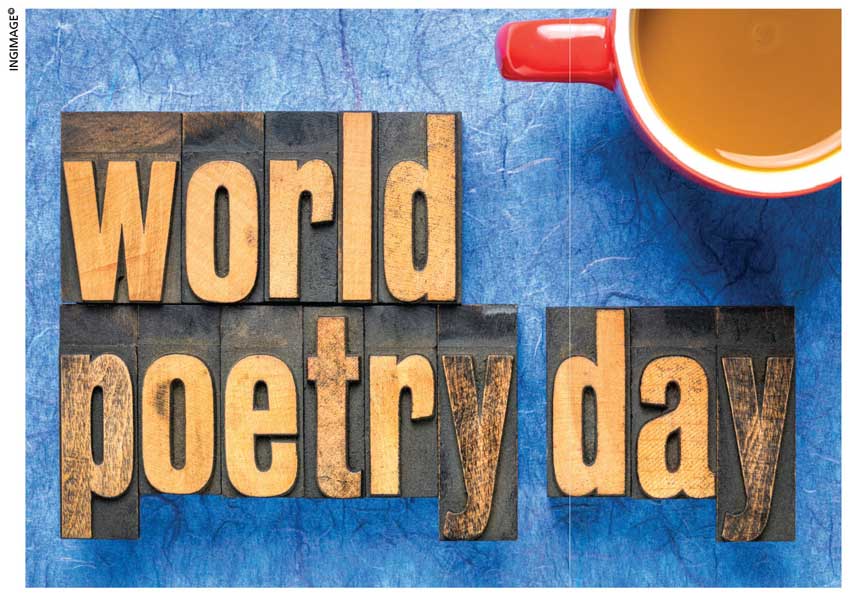LITERATURE EVOLUTION
PARSING OF DIGITAL POETRY
Ruwandi Perera has to wrap her head around the process of transformation!
When Robert Frost said “I have never started a poem yet whose end I knew,” it’s doubtful that he was predicting the art and science of poetry in the 21st century. Decades after his demise, we are seeing a whole new plot taking shape in the world of poetry where digital technologies are changing the play so that both writers and readers won’t know the beginning or end of any poem!
We celebrate World Poetry Day this month to applaud and appreciate one of the most treasured forms of expression. Yet, whether we really understand today’s poetry – which includes e, digital and cyber versions – is questionable.
E-poetry is so much more than publishing a poem online. Similar to how the world’s first printing press changed the transmission of words from oral to written, computers have transformed the way we create, read and analyse poetry.
There are many ways to understand what e-poetry is. It is the use of technology and software to create and read poems digitally. It’s also a form of literature that uses coding, holograms, images, sound, video and hypertext – text that links to other texts when clicked on – to create poems.
The Electronic Literature Organization (ELO) defines e-literature (and e-poetry) as “works with important literary aspects that take advantage of the capabilities and contexts provided by stand-alone or networked computers.”
So what does this really mean?
Poet and Professor of Digital Media at the Massachusetts Institute of Technology (MIT) Nick Montfort wrote a poem after being inspired by the natural beauty of the Taroko Gorge in Taiwan. He penned this poem by first writing a computer programme named Taroko Gorge, which in turn wrote the poem for him.
The poem, which is also named Taroko Gorge, is a never-ending piece that’s written by the computer programme. It chooses words from an embedded list and puts them into stanzas.
It’s not a single poem… it is a poetry platform where digital authors can easily hack into the computer programme code and use the words therein to collaborate, experiment, redesign and write any poem they like – and it doesn’t even need to be about natural beauty.
Digital poetry or e-poetry is not about words anymore – it’s about the effort that goes into creating the words and work involved in enjoying them.
Digital technologies, computer languages and human intelligence collaborate to create these versatile and boundary-less pieces of literature that are interactive. Readers can interact with the text to decide how the poem should flow and insert their contributions to the work as they go.
Take another e-poem – The Last Performance, by Judd Morrissey, which is based on architecture – it is apparent that the words are assembled to define space. Readers first read the ‘dome’ of the building – the poem where both readers and writers have contributed to the texts . And when they click on any word or text, they’re led to another one.
Eventually, readers find themselves in a labyrinth of words and only they can decide their way around it. Add sound, visuals and text formations to the mix, and it’s a literary phenomenon. Above all, what’s incredible is that every reader will read a different piece of literature at the end.
A marriage between technology and poetry may sound like an attempt to change a sacred treasure; some might even consider it insulting to the great poets. Yet, like everything else, poetry (which is the most versatile and rule-less form of art and literature) is also changing.
E-poetry doesn’t take away words, idioms, metaphors and rhythm from poems; it simply adds visuals, texts, sounds, coding and above all, interaction and collaboration, into the mix.
For amateur e-poetry readers, digital poems in the Electronic Literature Collection published by the ELO will be a good place to start. And amateur e-poets have already written e-poetry if they’ve used technology to compose it. If they have posted poems on Facebook or Instagram, created memes, shared reels with texts and posted content on TikTok, they’re certainly amateur e-poets.
Digital poetry is truly mind-blowing and extremely difficult to wrap one’s head around. In addition to reducing the traditional distance between poets and readers, it paves the way for collaboration while preserving uniqueness in writing and reading.
Readers of digital poetry aren’t passive consumers of literature; they are active co-creators of perhaps the most fluid form of literature we’ve seen yet.




